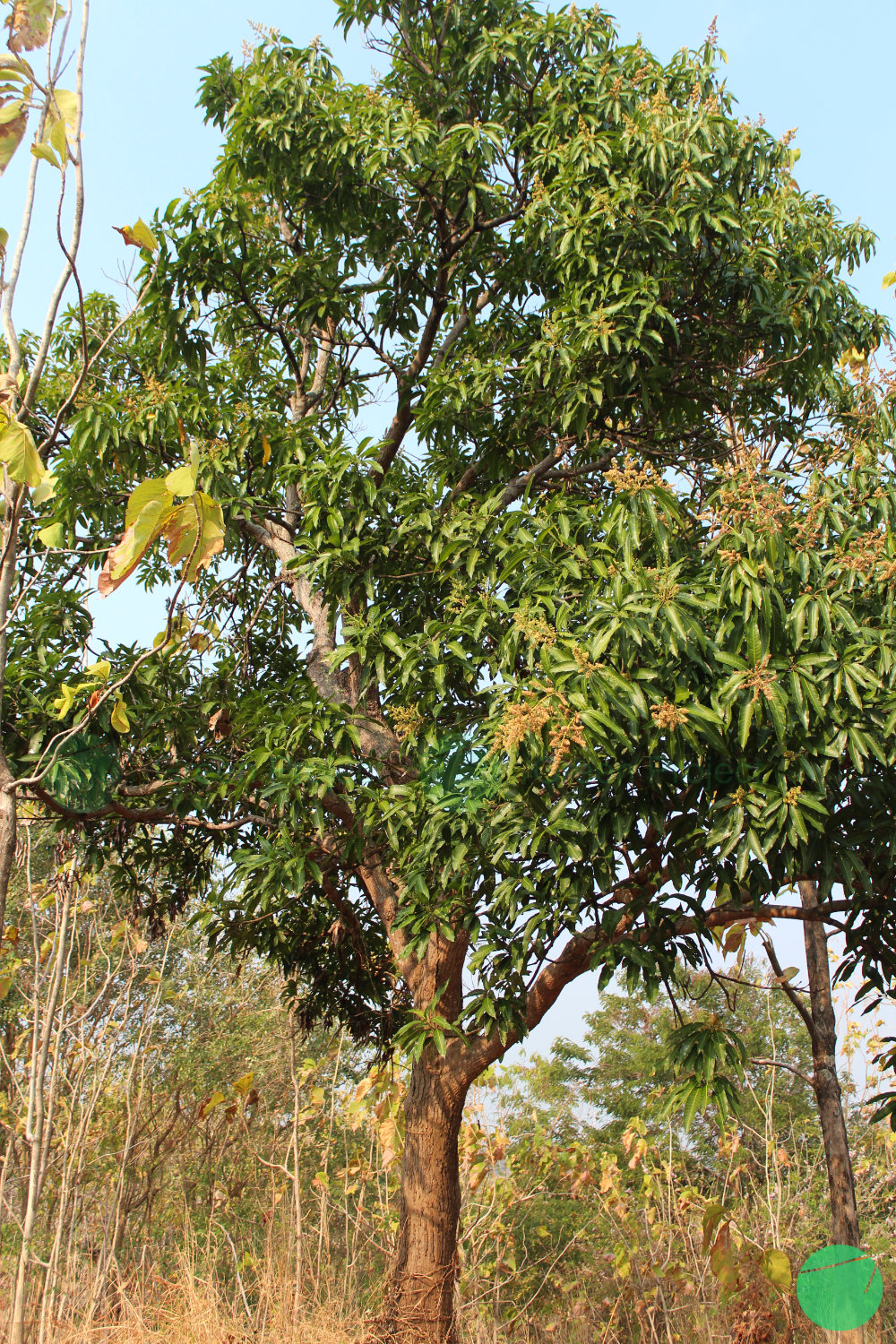Naming Identity
Mangga in Indonesian is a drupe or drupe from the cashew family (Anacardiaceae) which is known as Mangifera indica in Latin. Internationally, this plant is known as mango.
The source of the popular name comes from several words adapted from various languages. The word manga comes from the Portuguese for manga, the Malay mango, as well as from the Tamil man (mango tree) and kay (fruit). Meanwhile, the scientific name Mangifera indica refers to the plant that holds mangoes in India (Etymonline, 2020).
Another source states that the name mango most likely comes from the Malayam word manna which the Portuguese adopted as manga when they came to Kerala in 1498 for the spice trade (The Editors of Encyclopaedia Britannica, 2023).
Taxonomy
Kingdom | Plantae |
Phylum | Tracheophyta |
Class | Magnoliopsida |
Order | Sapindales |
Family | Anacardiaceae |
Genus | Mangifera |
Species | Mangifera indica |

Origin and Distribution History
Mango is known to be a fruit that originates from the foothills of the Himalayas in South Asia (East India, Burma and the Andaman Islands) which borders the Bay of Bengal. Mango is the national fruit of India, Pakistan and the Philippines, while the mango tree is the national tree of Bangladesh.
The following is an excerpt from a scientific report written by Yadav & Singh (2017). Mango cultivation began around 4000 ago in India through the evidence of records written by de Candolle. From its center in the Indo-Burma (Myanmar) region, mango seeds were brought out starting around 300 - 400 AD. Initially, mango seeds were brought to Southeast Asia and the Malay Archipelago until they finally arrived in China in the 7th century AD.
A historical record and paleo-botanical evidence regarding the history of mangoes in the Indo-Burma-Malay region states that Hsuan-tsang was the first person to bring mangoes to China in the 7th century AD. Then, mangoes were brought by explorers from Persia to East Africa around the 10th century AD and entered the Philippines through missionaries to Sulu and Mindanao in the early 15th century AD. From the Philippines, mangoes began to spread throughout the world at the end of the 15th century AD, brought by Spanish and Portuguese explorers.
The Portuguese are said to have introduced the vegetative method of propagation through cloning in India for the first time by cloning superior mono-embryo trees in the 15th century AD. India's most important mango cultivars such as Alphonso, Dashehari and Langra, are selections that were created during Akbar's time (1542–1605 AD) and have been propagated vegetatively for several hundred years.

Growth and Shape Description
The tree is evergreen with a height that can reach up to 15–18 meters and reaches a very old age. Its simple leaves are lanceolate (scalpel shape), with a length that can reach up to 30 cm. The flowers are small pink and tend to be fragrant. Some of the flowers have stamens and pistils, while others only have stamens.
The fruit varies greatly in size, color, and character. The shape is oval, round, heart-shaped or kidney-shaped which is long and slender. The smallest mangoes are no bigger than a plum, while others may weigh 1.8 to 2.3 kg (4 to 5 pounds). Some varieties are brightly colored with red and yellow hues, while others are dull green. The single large seed is flat, and the flesh surrounding it is yellow to orange, juicy, and has a distinctive sweet-spicy taste (The Editors of Encyclopaedia Britannica, 2023).
Efficacy and usability
Mangoes have been known for centuries to have many health benefits. Mango has been an important food mentioned in traditional Indian Ayurvedic medicine and has been widely consumed for over 4000 years. Mangoes are known to be rich in beta-carotene (the pigment responsible for the yellow-orange color of the fruit). Beta-carotene is an antioxidant compound that has been shown to fight free radicals that can cause cell damage and potentially lead to cancer (WebMD Editorial Contributor, 2020).
Another benefit that you need to know is that mangoes contain a group of digestive enzymes called amylase. So this fruit is very good for digestive health.
Apart from that, mango is believed to be very helpful in supporting the cardiovascular system. Which through its magnesium and potassium content can help lower blood pressure. Meanwhile, the mangiferin content in mangoes is believed to help reduce heart inflammation.

Mango in Culture and Religion
Mangoes are closely associated with folklore and religious ceremonies in India. Buddha himself was gifted a small mango tree that he may have found to rest in its grateful shade (The Editors of Encyclopaedia Britannica, 2023).
Mango Industry and Cultivation in Indonesia
Indonesia is one of the largest producers of mangoes in the world, with the fruit being widely cultivated throughout the country. According to a Statista report, Indonesia produced around 2.86 million metric tons of mangoes in 2021, making it one of the largest mango producers in the world.
According to a report by the International Society for Horticultural Science, East Java is the main mango-producing province in Indonesia, followed by South Sulawesi, Southeast Sulawesi, West Nusa Tenggara, East Nusa Tenggara, and East Kalimantan. The report also states that mango cultivation in Indonesia is mostly carried out by small farmers using traditional methods, through the use of limited modern technology and inputs.
There are several types of mangoes that are generally grown in Indonesia, including Arumanis, Gedong Gincu, Manalagi, and Harum Manis.